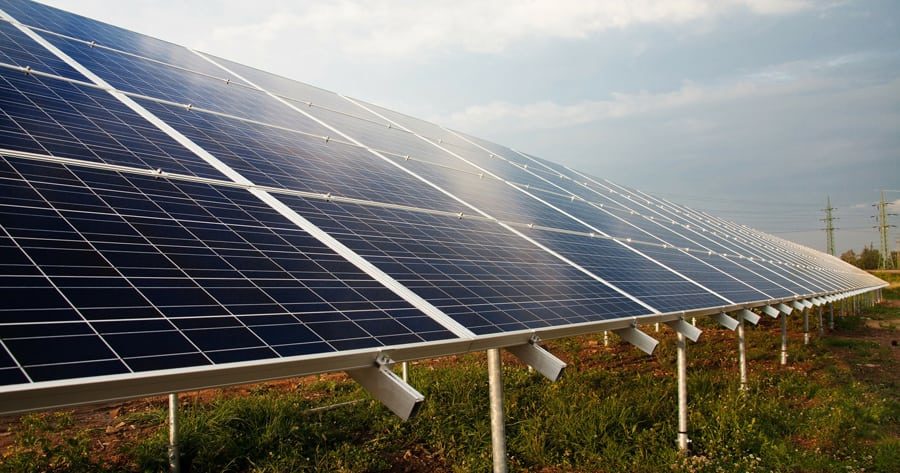
Home » French company eyes Richland for solar farm as energy costs remain uncertain
French company eyes Richland for solar farm as energy costs remain uncertain

September 14, 2017
While a proposed Richland solar power project would be the biggest in the state, the economic future of this source of electricity in Washington is not yet written in stone.
This will be the first American venture for the French solar power company Neoen. As Neoen studies the potential installation of a 20-megawatt solar farm in northern Richland, several factors are in play.
Producing solar power has become cheaper, but still not as much as hydropower or natural gas — the figures on all three sources constantly fluctuate. And the American Southwest is still a more desirable solar power region than the Northwest. The sun’s rays hit solar panels at much better angles at the lower latitudes to create more electricity.
“The efficiency on a solar project in the Mojave Desert is going to be much higher,” said Steve Simmons, senior economist in the energy division of the Northwest Power & Conservation Council.
That is why Oregon and California are swamped with solar power projects, while Neoen is only the second utility-scale project in Washington
Neoen’s proposed project, scheduled for completion in 2019, is on a 300-acre piece of former federal Hanford land just northwest of the 300 Area. The federal Department of Energy transferred that land to the Tri-Cities Development Council. TRIDEC then transferred control to Energy Northwest with the understanding that at least 100 acres would be used for solar power. Neoen obtained an option on 150 acres earlier this year.
The discussions have been underway for three years. Energy Northwest, a power plant in north Richland, already has a 39-kilowatt demonstration solar panel project in the White Bluffs area, and it plans to build a four-megawatt solar farm next to Horn Rapids Road. In comparison, the Bonneville Dam near Portland produces 1,050 megawatts. The Columbia Generating Station reactor provides 1,190 megawatts. Near Walla Walla, 454 wind turbines create 104 megawatts.
“Twenty-megawatts isn’t that much. But for solar power, it’s pretty good,” said Mike Starret, an energy analyst with the Northwest Power & Conservation Council.
Founded in 2008, Neoen is an independent supplier of electricity from renewable energy (solar, wind and biomass) and is set to be the first French supplier to reach 1,000 megawatts of installed power.
Neoen operates in France, Australia, El Salvador, Mexico, Zambia, Mozambique, Jordan, Jamaica, Portugal and Ireland, producing more than 1.2 gigawatts in electricity.
“The Hanford site is as perfect site to implement a first realization. The irradiation and interconnection conditions are favorable. Besides, the solar project is strongly supported locally,” said Neoen spokeswoman Monica Andreu in an email.
Neoen declined to reveal its project’s costs for the estimated year of construction.
“Neoen’s track record has proven its capacity to become a competitive player in different markets,” Andreu said.
Neoen is currently looking for buyers for its electricity— a venture that will include how to transmit the produced power to those customers. That transmission piece will be a key factor on whether the project is successful, said officials with the Northwest Power & Conservation Council.
Neoen aims to supply power in excess of 3,000 megawatts by 2020, and is opening an office in Washington state to address the U.S. market.
Solar power plants are still relatively new in the Northwest.
There is one 0.5-megawatt utility-scale solar farm in Washington. Oregon has 11 solar farms capable of producing 35.2. megawatts among them, including four sites in Umatilla County with a total output of two megawatts. Oregon has another 37 on the drawing board capable of generating about 465 megawatts, including two 56-megawatt plants in central Oregon, according to figures provided by the Northwest Power & Conservation Council.
Southwestern Idaho has two solar sites capable of producing 120 megawatts.
On the plus side, the price to build such plants has dramatically shrunk in recent years.
“Costs for solar photovoltaic technology have dropped significantly. ... Investments into research and development have paid dividends in improved solar cell efficiency, and high-tech module manufacturing on a large scale has brought solar costs down far enough to rival other variable energy resources. … Future solar costs are forecast to continue to decline over the next 20 years. However, there is a wide band of uncertainty around the cost of solar; actual costs may come in much lower (or higher) than expected,” said the latest power council report on the subject.
Capital costs have shrunk by 50 percent to 70 percent to install solar farms, said Simmons, with those cost declines expected to continue, but at a slower rate. That’s because solar panels can be built more efficiently in greater numbers, the improved technologies of the panels and companies becoming more efficient in installing panels, Simmons said.
Also, two federal tax incentive programs are in place to encourage companies to invest in solar power projects, the report said.
However, President Donald Trump’s push to install any type of tariffs on any American imports could spill over into the cost-effectiveness of building solar farms in the United States, according to Green Tech Media, an online news agency covering the solar power industry.
Recent Green Tech stories noted two manufacturers of solar panel components — Georgia-based Suniva, which has filed for Chapter 11 bankruptcy protection, and Oregon-based SolarWorld America, also financially troubled — have filed unfair trade practice complaints with the U.S. International Trade Commission, or ITC, seeking a four-year tariff on imported crystalline-silocin solar products.
However, the Solar Energy Industries Association, which represents the rest of the industry, strongly opposes Suniva and SolarWorld America on this matter, contending such a tariff would double the price of imported solar modules.
The two sides have unveiled radically contradicting economic analyses to support their positions, according to Green Tech Media.
A report by Suniva and SolarWorld claims increased tariffs would create 114,800 jobs in the United States. But another study cited by Solar Energy Industries Association claims such a tariff could cost the American solar industry 88,000 jobs while increasing the cost on a project such as Neoen’s by 30 percent. The solar industry currently employs about 260,000 people, according to Green Tech Media.
The ITC is expected to make its primary recommendation by Sept. 22, and have it to Trump no later than Nov. 13.
Local News Energy
KEYWORDS september 2017




